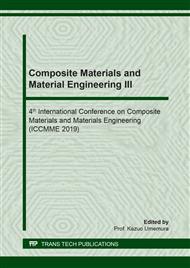p.385
p.391
p.397
p.404
p.410
p.416
p.424
p.430
p.436
Phase Change Material to Reduce Cooling Load of Buildings in Hot Climate
Abstract:
Due to the hot climate of the United Arab Emirates (UAE), where the external ambient temperature may reach 50°C in the summer season, almost 75% of the total energy is consumed in air-conditioning (AC). A significant improvement in the AC systems performance during hot summer time aligned with energy conservation could be achieved by pre-cooling of the air entering the condensers. Inclusion of Phase Change Material (PCM) as thermal energy storage (TES) have been widely used as one of the environmentally friendly energy saving materials due to its high energy density. The absorption/releasing of heat by PCM during its phase change, provides a latent heating/cooling for the surrounding. Numerous systems have implemented PCM based-TES for cooling purposes, such as thermally activated building systems (TABS), suspended ceilings, external facades or in the ventilation system. This study examines PCM based air pre-cooling concept and evaluates its performance in extremely hot climate of UAE. The drop in the outlet air temperature of the duct system quantifies the cooling effect. A paraffin based PCM with melting range of 30–33°C integrated in containers placed in the test chamber mimic the air conditioning duct system, and its cooling effect is monitored. A Conjugate heat transfer model employing enthalpy-based formulation is developed to predict the optimized PCM container size and optimum airflow rate validated with experimental data. Single and series columns of PCM containers subjected to different levels of supplied air velocity at range of 1 m/s - 4m/s are evaluated. Employing series of PCM enclosures at low air velocity of 1m/s enhanced the pre-cooling performance and reduced the outlet air temperature to 35°C yielding a temperature drop up to 11°C.
Info:
Periodical:
Pages:
416-423
Citation:
Online since:
May 2019
Authors:
Price:
Сopyright:
© 2019 Trans Tech Publications Ltd. All Rights Reserved
Share:
Citation:


